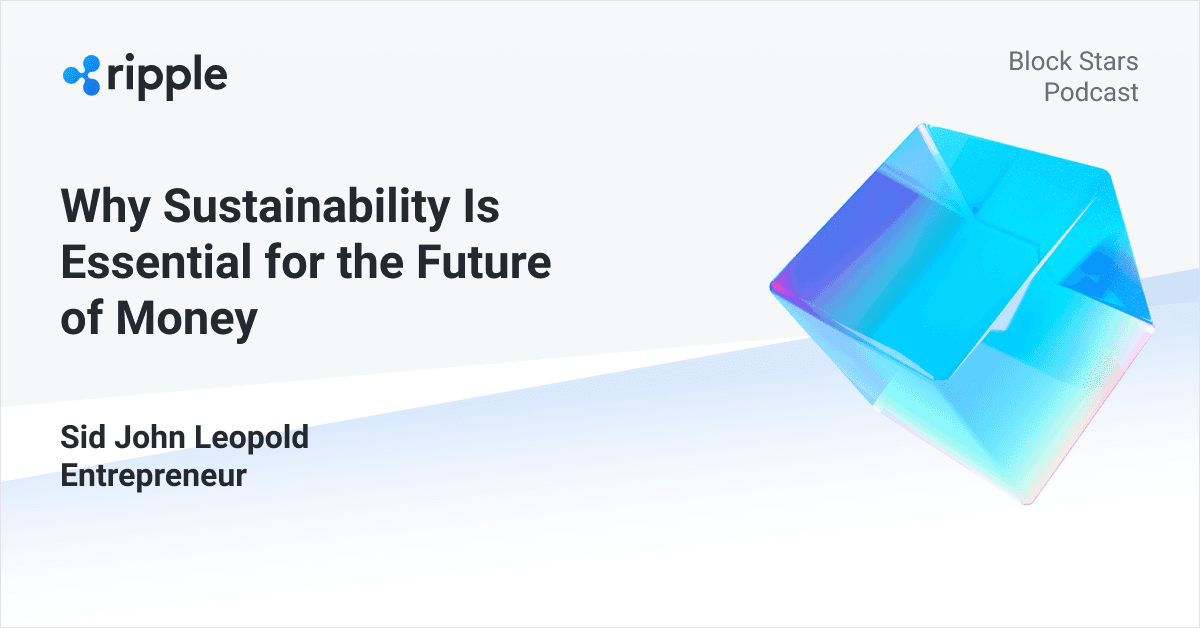Block Stars is a podcast series where Ripple CTO David Schwartz meets blockchain’s most innovative and impactful thinkers. In the latest episode, David talks with serial entrepreneur Sid John Leopold about the environmental impact of blockchain technology and what it means for the future of money.
In a 2017 academic article, Sid analyzed the eco-friendliness of various payment methods, including the U.S. dollar, Visa, Bitcoin, and XRP. Though he already knew that Bitcoin mining is an energy-intensive process, the scale of its consumption was a shock.
“Bitcoin uses more energy than whole small countries, for example, Iceland and Syria,” explains Sid. “We are talking about massive amounts of energy. Compared to the biggest [tech] companies…that…have hundreds of thousands of servers around the globe, they are not even using 1% of what Bitcoin is using when it comes to electricity.”
Yet even more surprising was discovering that another blockchain-based currency, XRP, uses less energy than both the dollar and Visa. For Sid, this was a critical insight as it demonstrated that XRP’s consensus protocol provided a viable alternative to Bitcoin’s extremely inefficient proof-of-work system. XRP shows that digital assets can be useful and sustainable, especially when they make money move faster.
“I view cryptocurrencies [as] tools of innovation with the potential to make the world economy more efficient,” he says. “Most of our money today sits idly either waiting for instructions in Nostro accounts or in transit. The only time money is really useful in the real economy with real people creating real value is when money is exchanged for goods and services.”
This characteristic of money means that how fast money moves from one person to another is extremely important. A payment in transit doesn’t benefit the sender, who may not receive the goods or service purchased until completion, or the recipient, who has to wait before reinvesting the funds in their business.
“If $1 travels to 10 destinations in under a minute versus taking 3-5 days going A to B, how much value has the fast dollar created versus the slow one?” asks Sid. “Think of the fast dollar as a tool that can exchange someone’s wants for a need, more times per minute than the slow one. [If] money can travel faster, the economy is going to scale…this is something that’s good for everyone.”
Scaling is an essential problem for Bitcoin, which spits out more and more CO2 as more coins are mined. Sid believes this has the potential to hinder Bitcoin’s future, especially if we’re looking at cryptocurrencies as a long-term replacement for many of the world’s more inefficient and less valuable Fiat currencies.
“Currencies are just a tool that we use to trade,” he states “We’re going to use money 2.0 if it works better. The environment is the factor that affects us all. We don’t want those tools to…drastically make our lives worse off in the future. If you use Bitcoin regularly every day in your transactions, you emit 144 pounds per transaction on average. This probably is not the most efficient way to reach consensus.”
Listen to the latest episode of Block Stars to hear more from Sid about the sustainable future of money, plus find out why giving up gaming got him into crypto for the first time.







